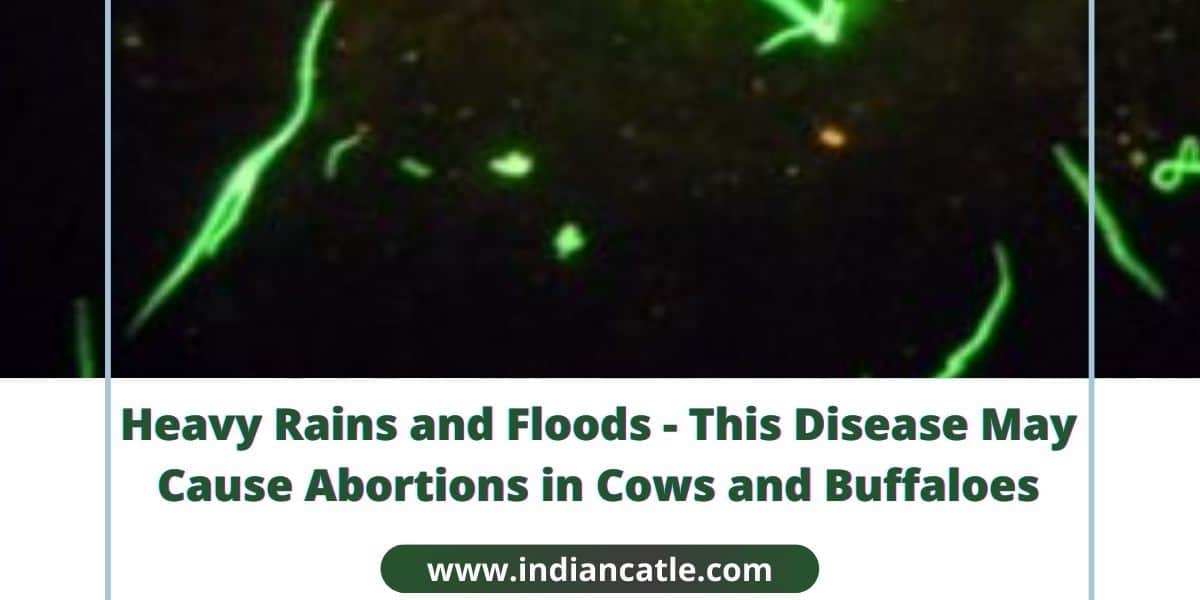
In Floods Farmers Should Protect Animals from Leptospirosis
Leptospirosis Disease
Cows and buffaloes exposed to floods or water logging due to heavy rainfall are likely to suffer from common bacterial disease leptospirosis. The leptospirosis symptoms in this disease area, sudden milk drops, abortion and repeat breeding in long-standing cases. This disease is of zoonotic importance as a disease can be transferred to farmers’ family members. In human common symptoms are a severe headache, influenza-like symptoms and abortion in pregnant women.
Floods and waterlogging after heavy rainfall has become a common feature in many parts of India, including Maharashtra. Due to floods, human as well as an animal population are forced to relocate to safer areas requiring large scale movements. The movement to safer areas is a major threat to animals as unlike human, they are forced to walk in floodwater. Since bacteria of this disease is present in logged water, animals are more prone to contract this disease. Farmers should take necessary precautions to control this disease following floods.
What is Leptospirosis in Cattle?
Leptospirosis in animals can be expressed as acute or sub-acute disease. In few animals, the infection may turn latent which is more harmful as these animals without showing any symptoms excrete bacteria in urine and other secretions including milk. Thankfully, these bacteria are very sensitive to dry conditions and sunlight hence in usual subtropical weather conditions, transmission to other cows is rather difficult. But in a humid environment, the risk of contracting this disease is very high. Published reports suggest that floods or accumulated rainwater coming from dairy farm/drains and other farm waste carry abundant of leptospira bacteria.
When animals stand or walk in flood water these bacteria can enter the body through intact mucous membranes, such as eyes, skin, abrasions or wounds. There are several strains and serovars (variants) but in cattle Serovar ‘hard’ has is important as it causes a sudden drop in milk yield, abortion and repeat breeding.
Leptospirosis symptoms
Milk Drop Syndrome:
Farms witnessing a sudden drop in milk production during heavy rainfalls and flooding should suspect leptospirosis. The drop is sudden and many animals on the farm will show a drop in milk (as it is common-source). Sometimes, milk may be red coloured due to the presence of haemoglobin. Please remember that discolouration in milk in this disease would be in milk from all quarters, unlike one or two seen in mastitis. Animals suffer from mild fever, which in many cases is transient, followed by milk drop. In some cases, mastitis is recorded wherein milk secretion turns thick, colostrum-like and blood-tinged.
Abortion / foetal death:
Leptospirosis in ruminants is also cause of abortions, which may occur in last trimester. Early embryonic death has also been reported.
Repeat breeding:
Animals that have contracted leptospirosis show repeat breeding.
Strategic Prevention
There is the number of serological tests available but these require laboratory set up and are costly. The best strategy in the event of animals exposed to flooding is to administer a single dose of dihydrostreptomycin 25 mg per kg body weight. The strategic treatment should be carried out at least in cows that are milking and pregnant.
It is, therefore, requested that Government agencies include leptospirosis strategic prevention action in their flood-control policies, more so because it is of zoonotic importance.
